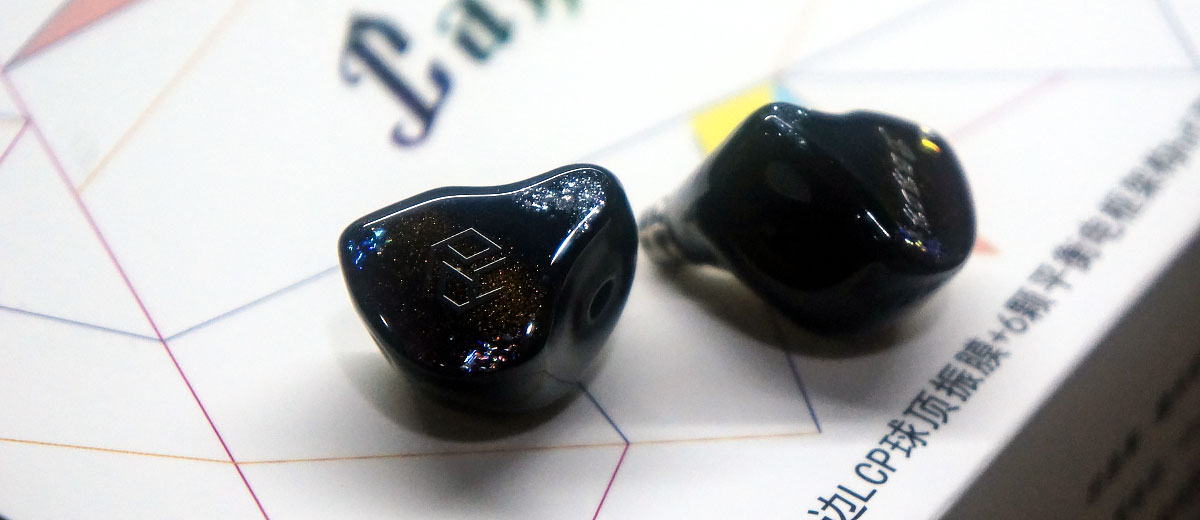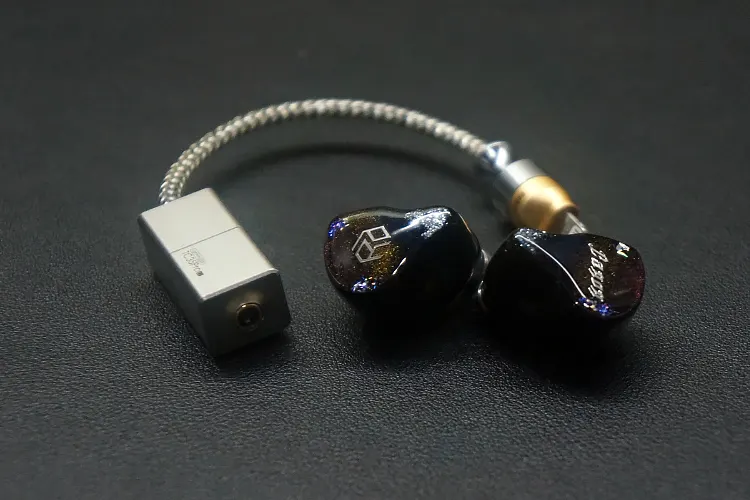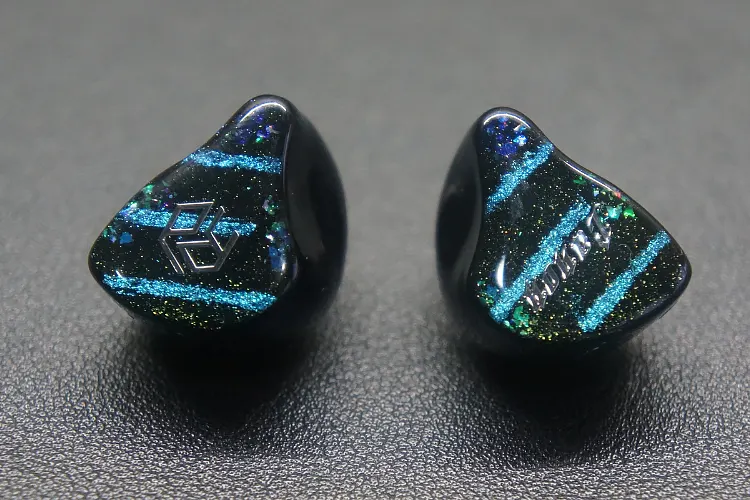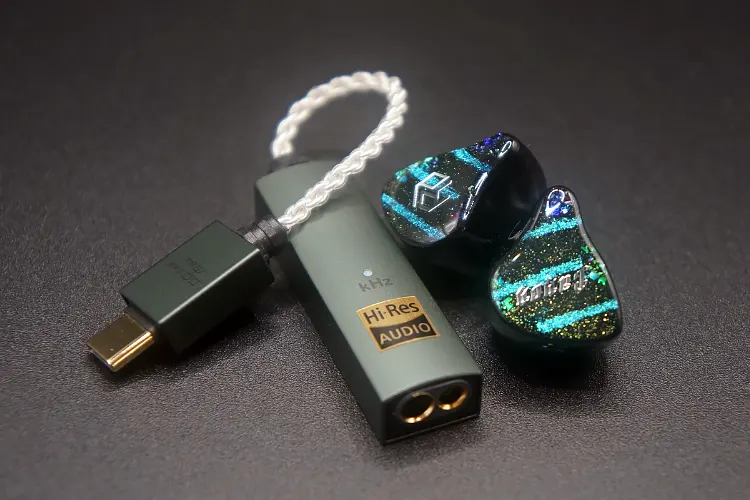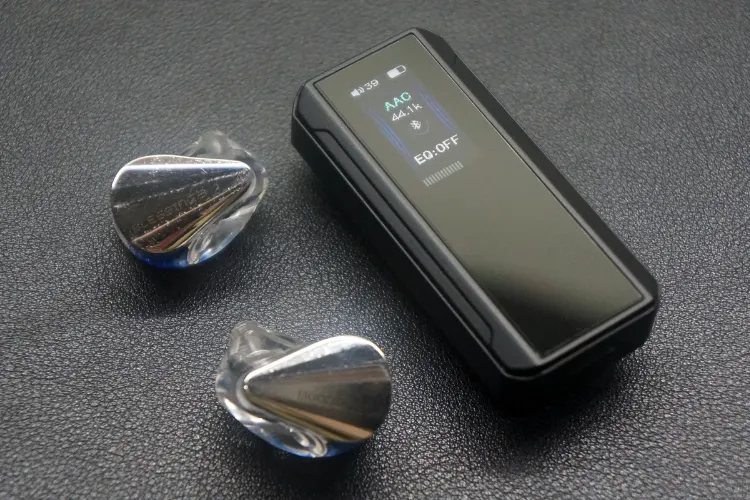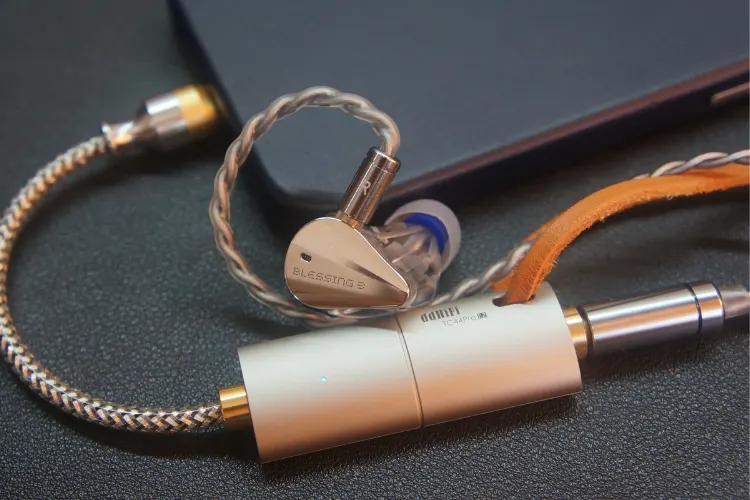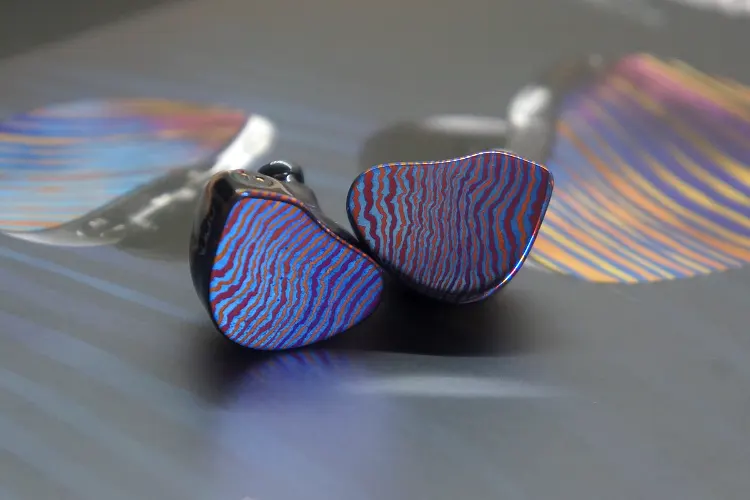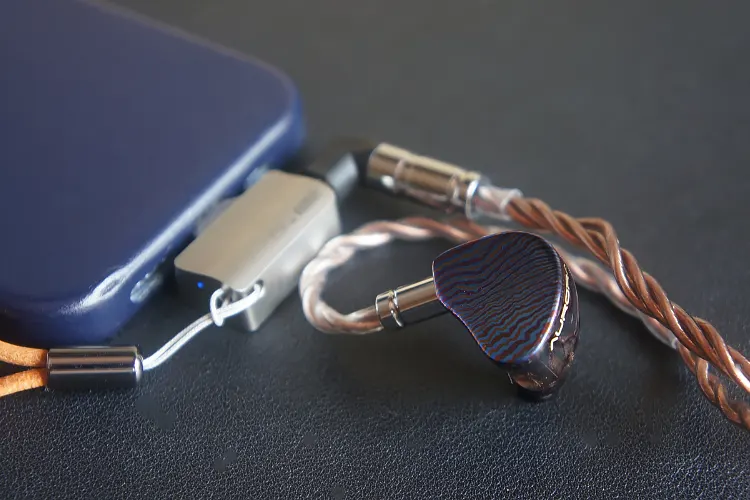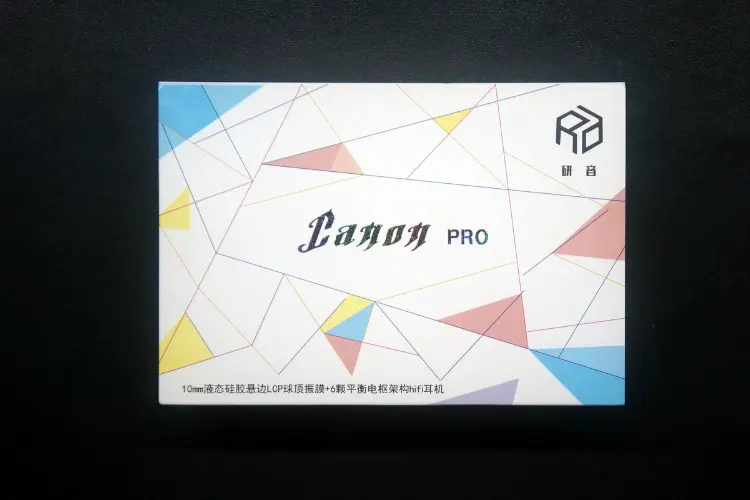Synergy
Efficiency
With an impedance of 18 Ohms and efficiency of 104 dB, the Canon Pro can easily reach a listenable volume level through a laptop.
However, it benefits from being driven by a more powerful dongle or DAC/AMP. Throughout my testing, I tried the Canon Pro with the ddHiFi TC35Pro E2, 7Hz Artemis39, iFi audio GO Link Max, and FiiO K11.
I observed better dynamics and harmonics when the Canon Pro was being powered through more powerful sources such as the FiiO K11 and iFi audio GO Link Max.
Pairings
Since I found that the Canon Pro did not necessarily need a lot of power, but benefited slightly from it as well. The ddHiFi TC35 Pro E2 and the FiiO K11 were my preferred pairings for on-the-go and desktop usage, respectively.
I initially tried pairing the 7Hz Artemis39 with the Canon Pro. However, I found that its additional warmth added a little too much coloration to the already warm presentation of the Canon Pro.
I then tried the iFi audio GO Link Max, while I did enjoy the additional power it offered, I found myself gravitating to the more neutral and clean presentation of the ddHiFi TC35Pro E2.
Select Comparisons
Yanyin Canon II
Technical
The Yanyin Canon Pro features a hybrid configuration of one dynamic driver and six balanced armatures (1DD+6BA), with an impedance of 18Ω and a sensitivity of 104 dB.
In contrast, the Canon II also utilizes a hybrid design but with a slightly simpler configuration of one dynamic driver and four balanced armatures (1DD+4BA). It has a marginally higher impedance of 20Ω and the same sensitivity of 104 dB.
In practice, I found that both models required almost identical amounts of power to drive.
Design
Coming from the same brand and product family, both the Canon II and Canon Pro have very similar designs. Both have a one-piece 3D-printed resin shell that appears pitch black under most lighting.
The faceplate is where the two IEMs begin to differ. The Canon Pro’s faceplate is divided into four vertical segments, each with its own glittery, shimmery color treatment. These colored decorative flakes catch the light at various angles.
On the other hand, the Canon II’s faceplate features a glitter-infused, galaxy-style motif that leans more playful and eye-catching.
Both IEMs have similar shapes, resulting in almost identical comfort levels. I did not notice any hotspots or weight-related discomfort when comparing the two IEMs.
Performance
The Canon Pro delivers a thicker and warmer low-end, particularly noticeable in the midbass region. Its bass drum presentation is tighter and more textured compared to the Canon II, which has a more balanced bass response.
While the Canon II still carries warmth, it presents both snare energy and bass drum depth with more equal emphasis, whereas the Canon Pro excels more specifically in bass drum articulation.
The midrange of the Canon II is cleaner and less colored, allowing string instruments and other midrange elements to retain better fidelity and separation.
The Canon Pro leans into a warmer and thicker midrange, which can occasionally smear instrument definition. Vocals still come through clearly on the Pro, but the overall warmth can obscure some midrange detail when compared directly with the Canon II.
Treble performance is where the two IEMs further diverge. The Canon II carries more treble energy, contributing to a more traditional U-shaped tuning with balanced bass and treble emphasis.
The treble instruments have greater sparkle and presence, making the Canon II more lively in the upper frequencies.
On the other hand, the Canon Pro smooths out treble peaks, delivering a more relaxed and less fatiguing presentation. This treble tuning helps reduce harshness in poorly mastered tracks but also slightly dulls the treble energy and air when compared to the Canon II.
MOONDROP Blessing 3
Technical
The Canon Pro employs a hybrid driver configuration consisting of one dynamic driver (DD) and six balanced armature (BA) drivers per side.
It has an impedance of 18Ω and a sensitivity of 104 dB. In contrast, the Blessing 3 features a hybrid setup with two 10mm dynamic drivers and four balanced armature drivers per side. It has an impedance of approximately 14.8Ω and a sensitivity of 120 dB/Vrms,
In practice, I found that the Blessing 3 was noticeably harder to drive than the Canon Pro and required a more powerful dongle.
Design
The Canon Pro features a one-piece 3D-printed resin shell with a sleek, pitch-black finish. Its faceplate is divided into four vertical segments, each with a shimmery, glittery finish, and etched with the Yanyin logo and model name. Small mesh vents and recessed tuning switches are located on the side of each shell
The Blessing 3 combines a transparent medical-grade resin shell with CNC-machined stainless-steel faceplates. These faceplates have an angular design with a mirror-polished finish. The transparent shell reveals the internal driver configuration, showcasing the engineering behind the IEMs.
In practice, I found the Blessing 3 to be bulkier, heavier, and less comfortable than the Canon Pro. The Blessing 3 stuck out of my ear more and had more weight distributed away from my ear compared to the Canon Pro.
Performance
The Yanyin Canon Pro has the edge in low-end texture and impact, with kick drums and bass guitars delivered with more note weight and subtle detail. Its low-end presentation feels more physical and tactile, giving bass instruments a fuller presence.
The Moondrop Blessing 3 has a slightly lighter bass impact. While it doesn’t match the Canon Pro’s textured low-end punch, it provides better separation from the mids, contributing to overall clarity.
The Blessing 3 delivers more forward and resolving mids. Synths, electric guitars, and horn instruments carry more fidelity and air, resulting in a clearer and more articulate midrange. Vocals also sound wider and more expansive on the Blessing 3.
The Canon Pro, while still capable in the midrange, leans toward a warmer presentation where bass elements sometimes take the foreground. It presents bass guitars more prominently and richly, but this can slightly obscure some midrange elements compared to the Blessing 3.
The treble performance is more energetic on the Blessing 3, with more sparkle, air, and extension, especially in instruments like snares and cymbals. It highlights low treble and high midrange percussion with better clarity and directionality.
The Canon Pro has smoother, more restrained highs, which makes it less prone to harshness but also slightly less resolving in the upper registers.
7Hz Aurora
Technical
The Canon Pro features a hybrid driver configuration comprising one dynamic driver (DD) and six balanced armature (BA) drivers per side. It has an impedance of 18Ω and a sensitivity of 104 dB.
The 7Hz Aurora employs a tribrid driver setup, integrating a 12mm composite diaphragm dynamic driver, two custom full-range balanced armature drivers, and a 6mm micro planar driver. The Aurora has an impedance of 30Ω and a sensitivity of 105 dB/Vrms.
In practice, I found that the Aurora required more power to maximize its resolution performance. All comparisons between the two IEMs were done paired with the FiiO K11.
Design
The Canon Pro showcases a faceplate divided into four vertical segments, each with a shimmery, glittery finish, and etched with the Yanyin logo and model name.
The rear side of each shell is embedded with a gold-accented “Canon” logo and a serial number, both encased within the resin. Small mesh vents and recessed tuning switches are located on the side of each shell.
In contrast, the Aurora features 3D-printed resin shells with a translucent, glossy brown finish, allowing a glimpse of the internal components. The faceplates are crafted using a titanium-based Damascus-type filament, resulting in a unique, multi-colored holographic pattern that varies with lighting conditions.
During my testing, I found that the Canon Pro was lighter, smaller, and more comfortable to wear for long-term listening.
Performance
Both the Canon Pro and Aurora share a generally warm tonal balance. The 7Hz Aurora offers superior detail resolution, especially in the midrange, where guitars and vocals are rendered with more precision.
However, this added clarity comes with a slightly metallic tone in the upper mids, particularly in high-pitched vocals, which can make the presentation feel less natural.
The Canon Pro delivers a more organic and relaxing tuning. Vocals are lush and smooth, with a thicker and more rounded character that makes extended listening more enjoyable.
Bass guitars are presented with weighty midbass and rich decaying harmonics, lending the Canon Pro a fuller and more musical low-end.
The treble presentation is also different between the two. The Aurora emphasizes treble more strongly, with hi-hats and cymbals having greater bite and energy, which enhances detail retrieval but may be fatiguing to some listeners.
The Canon Pro maintains a smoother treble profile that contributes to its more relaxed overall signature.
My Verdict
It appears that Yanyin has another competitive IEM on their hands with the Canon Pro. Combining impressive bass presentation with a relaxing sound signature and good detail retrieval, the Canon Pro provides some intriguing value.
Fans of the previous Canon II may be disappointed. The Canon Pro is neither objectively better nor worse than the Canon II, it merely has a different tuning style and approach.
However, for listeners who value a relaxed mid-range and treble presentation with a bass response rich in texture, the Canon Pro is worth considering.
Yanyin Canon Pro Technical Specifications
- Driver Type: 1DD+6BA
- Plug: 3.5mm Single Ended
- Impedance: 18Ω
- Sensitivity: 104 dB




